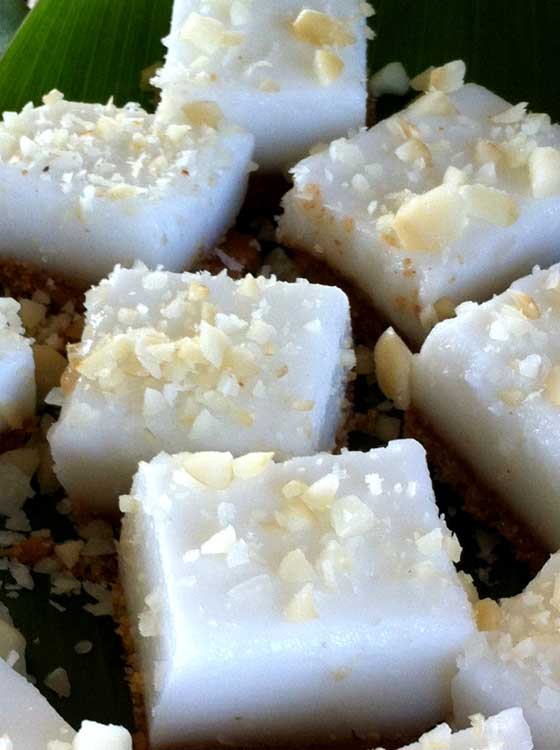Dear Readers,
Four recipes down, one more to go and then we will sadly say goodbye to the Hawaiian Series that brought to us all some sunshine during this cold, chilly winter time. If you have been reading about our previous dishes it’s time now to put on a pa’u skirt (the traditional Hawaiian skirt), warm up the oven and throw a wonderful Luau! But wait… you need one more dish to complete the menu, a great dessert to refresh the palate and end the night on a sweet note that will bring a smile on your face: Haupia.
Haupia is coconut pudding. There is no other flavor better than coconut that so well summarizes in a spoon-full the happiness and warmth of Summer. Anyone has at least one memory that coconut with its textured taste brings up to mind, whether from the childhood or from the most recent exotic trip.
In Hawaii Haupia is usually served as a gelatin dessert, however its pudding aspect before becoming firm made it popular as cake topping, particularly on wedding cakes. The Hawaiian local “Haupia pies” are the equivalent of our Western apple pies!
Haupia‘s dense consistency is due to the mixture of coconut milk with ground arrowroot starch (the Polynesian Arrowroot called pia), or cornstarch. Traditionally, nothing else was added, but nowadays sugar and salt are popular additional ingredients, which are then heated with the cornstarch and the coconut milk until smooth and thick. This packed-with-flavor dessert is to be served in very tiny portion, possibly small cubes to accompany a ti tea.
Enjoy Haupia at a party with friends or with a hot cup of tea while listening to the sound of pouring rain. No matter how cold it is outside, Summer is never too far with this coconut delicacy!
Ingredients:
2 cups coconut milk
1 cup whole milk
6 tablespoons sugar
5 tablespoons cornstarch
1/4 tsp vanilla (optional)
toasted coconut for topping (also optional)
Into a saucepan pour one cup of the coconut milk and combine it with sugar, cornstarch and vanilla. Turn on the heat on low and keep stirring until thickened. Add the rest of coconut milk with one cup of whole milk. Keep stirring. Pour into 8 inch square pan and chill until firm. Cut into squares and garnish with some toasted coconut.
~Enjoy!
Image from http://www.tastingkauai.com/haupia-hawaiian-coconut-pudding/





